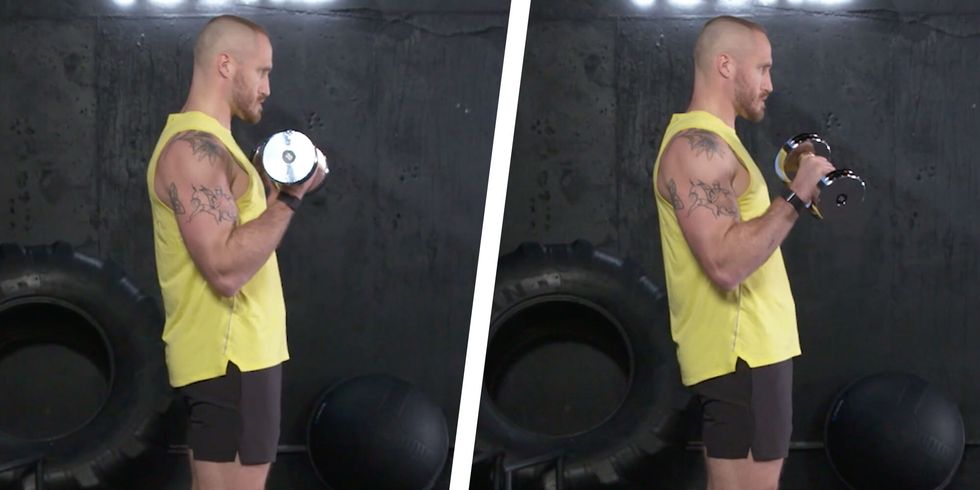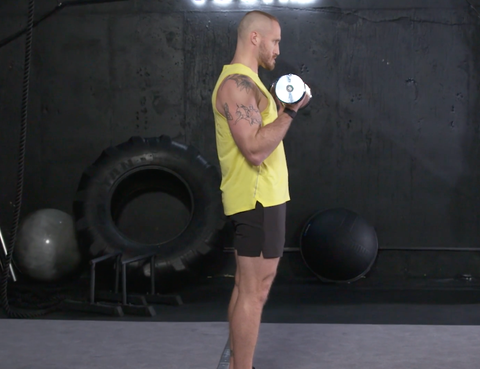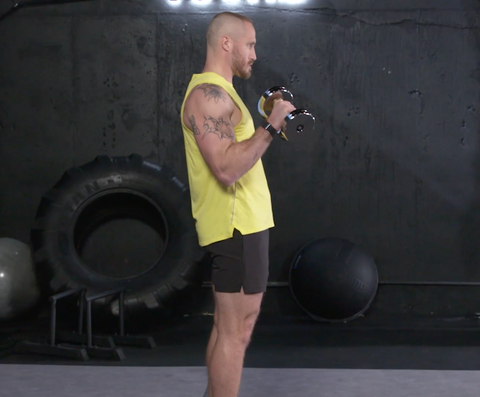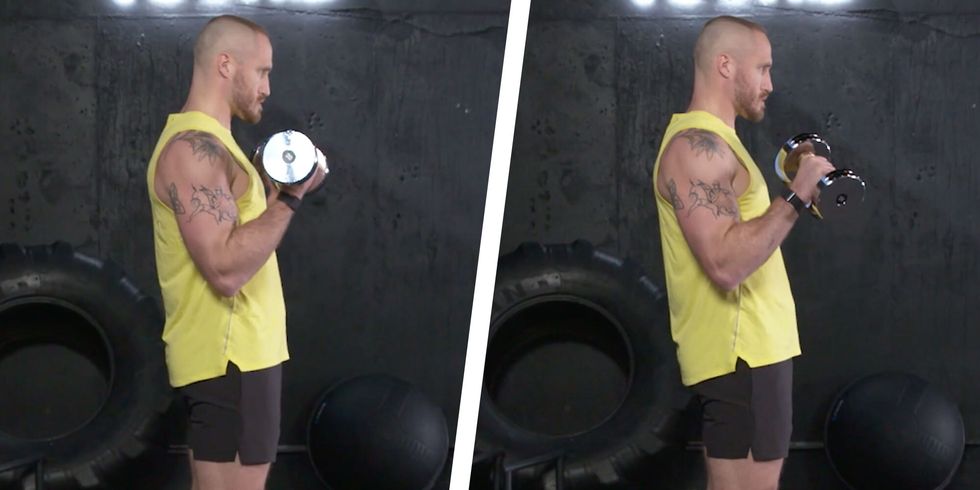
Guys love doing biceps curls. This is an undisputed fact. No, we technically don’t have a poll or study to back up that assertion—but we challenge you to step foot into any self-respecting gym, head to the free weight floor, and watch for just a few minutes. Inevitably, someone will grab a set of dumbbells and get to pumping. So what is the one exercise that might possibly top the classic biceps curl for guys who want to build a set of muscular, proportionate arms? Answer: an underrated variation that will allow you to pull double-duty to train the forearms, too. We’re talking about the Zottman curl.
The Zottman curl isn’t some hyper-technical, new-age innovation, either. The exercise has been around since the 19th century, when old-time strongman George Zottman developed it to target the biceps, brachialis, and forearms in one go.
Once you put it into practice, you’ll reap even more gains out of your curl workout. The catch: you’ll have to be patient and focus on all phases of the lift. You should already do that with every exercise, but it’s even more important with the Zottman curl, which has a different orientation for the concentric and eccentric parts of the movement.
To master the subtleties of the exercise, take notes as Men’s Health fitness director Ebenezer Samuel, C.S.C.S. and fitness editor Brett Williams, NASM-CPT reintroduce you to this classic double-powered arm-builder.
Benefits of the Zottman Curl
Unlike most other curls, which only directly target the biceps muscles (and in some cases like the hammer curl, the brachialis), the Zottman curl is designed to engage your forearms as well. Direct forearm training is too often ignored in standard workout splits, which is unfortunate since the muscles are essential for proportionately-developed arms and because strong forearms are the key to a strong grip.
To target your forearms, you’ll need to turn your palms and emphasize the eccentric (lowering) portion of the lift. Once you flip your palms, you’ll be in the right spot. Along with giving your forearms some much-needed attention, this focus will also help you to slow down for the eccentric phase, a principle you should apply to other exercises to keep yourself from rushing, too.
How to Do the Zottman Curl
The Zottman curl allows you to attack the forearms—but first, you’ll have to perform the concentric portion of the movement. You should follow standard dumbbell biceps curl form:
●Squeeze your glutes while using your abs to drive your ribcage down and close before finally squeezing your shoulder blades.
●You also make this a true biceps isolation exercise—palms in neutral, squeeze the biceps to curl the dumbbells up, thinking about rotating the palms, turning the pinkies at the top to get a good squeeze.

Men’s Health

Men’s Health
Now comes the twist to the exercise that makes it an effective forearm move. Instead of lowering the dumbbell as you normally would in a curl, you’re going to rotate your wrists to twist the dumbbells forward, making sure to keep your elbows in position at either side of your torso. Since your forearms aren’t as strong as your biceps, try to lower the dumbbells for at least a two-count, really emphasizing the eccentric portion of the lift. Don’t just drop the weight quickly; lower with good control after each rep. That’s what makes the Zottman curl different from all others.
“If people are going to curl up, they’re going to twist quickly and they’re going to lower down way too quickly, then you lose that eccentric effect, you don’t get the most out of curl,” Samuel says.
Since this is a forearm-focused movement, don’t try and lift heavy with this accessory move. Grab weights that are 10 to 15 pounds less than you normally would in a curl for about eight to 10 reps.
“You don’t want to have to rush through a bunch of reps,” Samuel says. “I’d rather you get eight to 10 good reps and really appreciate that eccentric—feel it in your forearms and feel it in your biceps.”
Want to master even more moves? Check out our entire Form Check series.
Jeff Tomko
Jeff Tomko is a freelance fitness writer who has written for Muscle and Fitness, Men’s Fitness, and Men’s Health.
Brett Williams, NASM
Brett Williams, a fitness editor at Men’s Health, is a NASM-CPT certified trainer and former pro football player and tech reporter who splits his workout time between strength and conditioning training, martial arts, and running.
This content is created and maintained by a third party, and imported onto this page to help users provide their email addresses. You may be able to find more information about this and similar content at piano.io
